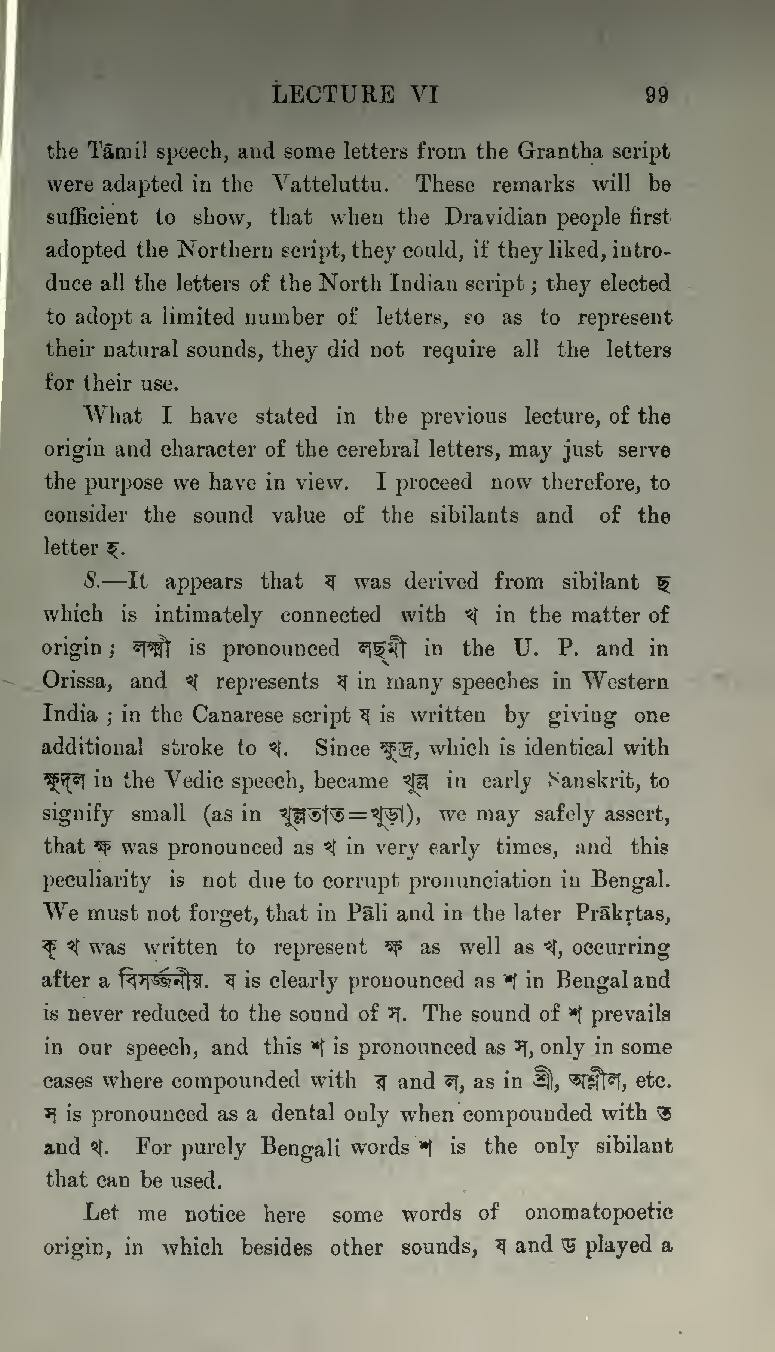the Tāmil speech, and some letters from the Grantha script were adapted in the Vatteluttu. These remarks will be sufficient to show, that when the Dravidian people first adopted the Northern script, they could, if they liked, introduce all the letters of the North Indian script; they elected to adopt a limited number of letters, so as to represent their natural sounds, they did not require all the letters for their use.
What I have stated in the previous lecture, of the origin and character of the cerebral letters, may just serve the purpose we have in view. I proceed now therefore, to consider the sound value of the sibilants and of the letter হ.
S.—It appears that ষ was derived from sibilant ছ which is intimately connected with খ in the matter of origin; লক্ষ্মী is pronounced লছ্মী in the U. P. and in Orissa, and খ represents ষ in many speeches in Western India; in the Canarese script ষ is written by giving one additional stroke to খ. Since ক্ষুদ্র, which is identical with ক্ষুদ্ল in the Vedic speech, became খুল্ল in early Sanskrit, to signify small (as in খুল্লতাত = খুড়া), we may safely assert, that ক্ষ was pronounced as খ in very early times, and this peculiarity is not due to corrupt pronunciation in Bengal. We must not forget, that in Pāli and in the later Prākṛtas, ক্ খ was written to represent ক্ষ as well as খ, occurring after a বিসর্জ্জনীয়. ষ is clearly pronounced as শ in Bengal and is never reduced to the sound of স. The sound of শ prevails in our speech, and this শ is pronounced as স, only in some cases where compounded with র and ল, as in শ্রী, অশ্লীল, etc. স is pronounced as a dental only when compounded with ত and থ. For purely Bengali words শ is the only sibilant that can be used.
Let me notice here some words of onomatopoetic origin, in which besides other sounds, ষ and ড played a
